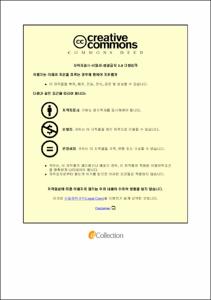A Study on Robot Motion Recognition and Regeneration
- Abstract
- Robot motion control is an attractive field because of its applications in industrial area. A lot of knowledge and experiments are demanded to accomplish robot motion control. This study proposes a method for robot motion recognition and regeneration used in painting and welding industries.
In the first part of this research, various control algorithms are reviewed and summarized. The main difficulties in robot motion control are:
• Modeling or mathematical model identification of the robot system.
• The nonlinear characteristics of robot system.
• The parameter variation of robot system during operation due to change in payload and friction, etc.
• High-speed hardware and complication in programming due to high order of control system.
• Requiring reprogramming due to change of the work pattern in short period.
These difficulties motivate us to propose a robot motion control approach by using robust control theory.
Model is essential for control system design, since most of controller system design are accomplished based on the model of robot. In this research, the joint models of robot are identified individually. To identify the transfer function of each joint, the step responses obtained from experiments are used. In this study, two models representing for the dynamics of robot system are described and used to design controllers to achieve good performance.
In the first case, from the experiment, step responses at several set points of a joint are obtained, and one of them is chosen as a representative one for the dynamic motion of this joint. Then the nominal model is identified from the representative step response. And the controller is designed based on the control framework to cope with the discrepancy between the real plant with the model due to unmodelled system dynamics, nonlinear characteristic, reducing of system orders and changing in parameters during operation, etc.
In the second case, the experimental step responses of a joint are implemented in the operating range and the models is calculated from these responses. Then a nominal model is chosen and the variation range of uncertain parameters in model is defined. Where, the robust control strategy is also introduced. In this case, the stability and performance of system are guaranteed in spite of parameter variation in the defined range.
In this study, to obtain the target route, the operator moves the end effector of robot to the desired positions and orientations. Then the joint motions are recorded in the memory. And the data are used to calculate the reference signals.
To evaluate the validity of the proposed designing methods, experiments are tried for the three degree of freedom (3DOF) robot. Proportional Integral Derivative (PID) control is used for the same system to compare robustness to uncertain parameters, disturbance inputs and control performance with the proposed method. And in the experiments, the results show that the proposed control strategy gives better properties than the traditional method.
- Issued Date
- 2016
- Awarded Date
- 2016. 2
- Type
- Dissertation
- Publisher
- Pukyong National University,The Graduate School
- Affiliation
- Pukyong National University,The Graduate School
- Department
- 대학원 제어기계공학과
- Advisor
- Young-Bok Kim
- Table Of Contents
- Chapter 1 Introduction 1
1.1 Background and Motivation 1
1.1.1 General overview of robot control system 1
1.1.2 Overview of applying robot in industry 4
1.1.3 Motivation of study 6
1.2 Objective of Study 6
1.3 Organization of Thesis 6
Chapter 2 Modeling of Uncertain System and Robust Control Design 9
2.1 Introduction 9
2.2 Modeling of Uncertainty System 10
2.2.1 Unstructured uncertainty 10
2.2.2 Parametric uncertainty 11
2.2.3 Linear Fractional Transformations 13
2.3 Performance and Stability of System 15
2.4 Design Controller 19
Chapter 3 Robust Control Design for 1DOF Robot Arm 25
3.1 Introduction 25
3.2 Identification of Robot Arm Dynamics 26
3.3 Controller Design based on Robust Control Framework 29
3.4 Recognition Strategy 31
3.5 Step Response from Experiment 34
3.6 Experiment Results about Work Pattern Recognition and Regeneration 35
3.7 Summary 37
Chapter 4 Motion Recognition and Regeneration for 3DOF Robot System 38
4.1 Introduction 38
4.2 Identification of Robot Dynamics 39
4.3 Controller Design based on Robust Control Framework 42
4.4 Experiment Results 44
4.4.1 Experiment setup 44
4.4.2 Identification results 47
4.4.3 Controller design 53
4.4.4 Transient response simulation 57
4.4.5 Calculation of the reference signal from output data 58
4.4.6 Experiment results 60
4.5 Summary 67
Chapter 5 Robot Motion Regeneration under Disturbance Input 68
5.1 Introduction 68
5.2 Identification Process 68
5.3 Robust Control Design for Family of Plant Models 72
5.4 Identification and Robust Control System Design 75
5.5 Experimental Results 81
5.5.1 Control performance without disturbances 82
5.5.2 Control performance with disturbances 87
5.6 Summary 92
Chapter 6 Conclusion and Future Study 93
6.1 Conclusion 93
6.2 Future Study 94
References 96
Publications 102
- Degree
- Doctor
- Files in This Item:
-
-
Download
 A Study on Robot Motion Recognition and Regeneration.pdf
기타 데이터 / 6.23 MB / Adobe PDF
A Study on Robot Motion Recognition and Regeneration.pdf
기타 데이터 / 6.23 MB / Adobe PDF
-
Items in Repository are protected by copyright, with all rights reserved, unless otherwise indicated.